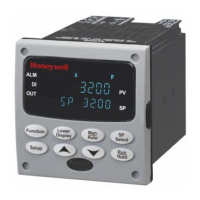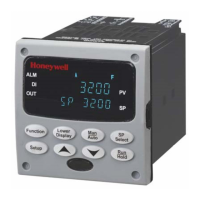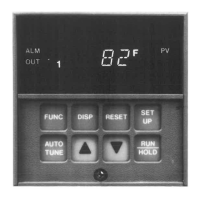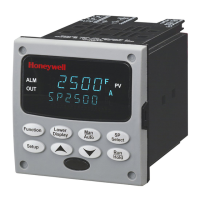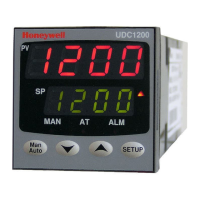Configuration
3/07 UDC3500 Universal Digital Controller Product Manual 119
Function Prompt
Lower Display
Selections or
Range of Setting
Upper Display
Parameter
Definition
IN1 LOW
–999. To 9999. Floating
(in engineering units)
INPUT 1 LOW RANGE VALUE—This value in
engineering units is displayed for all inputs but can
only be changed for inputs configured for linear or
square root transmitter characterization.
See the example in IN1 HI.
ATTENTION If Input 1 is selected as the PV
Source, then the range of the control Setpoint will be
limited by the range of units selected here.
RATIO 1
–20.00 to 20.00
Floats to 3 decimal places
RATIO ON INPUT 1—Select the Ratio value you
want on Input 1.
BIAS IN1
–999. to 9999.
(in engineering units)
BIAS ON INPUT 1—Bias is used to compensate the
input for drift of an input value due to deterioration of
a sensor, or some other cause. Select the bias value
you want on Input 1.
Final Input 1 Value = Input 1 * Ratio 1 + Bias 1
FOR EXAMPLE:
Input 1 Type = 100 ohm RTD (-300 °F to 1200 °F)
Input 1 Ratio = 0.5
Input 1 Bias = 15.7
If Input 1 = -200 °F
Then Final Input 1 = -200 * 0.5 + 15.7 = -84.3
If Input 1 = 0 °F
Then Final Input 1 = 0 * 0.5 + 15.7 = 15.7
If Input 1 = 500 °F
Then Final Input 1 = 500 * 0.5 + 15.7 = 265.7
FILTER 1
0 to 120 seconds
No filter = 0
FILTER FOR INPUT 1—A software digital filter is
provided for Input 1 to smooth the input signal. You
can configure the first order lag time constant from 1
to 120 seconds. If you do not want filtering, enter 0.
BURNOUT1
BURNOUT PROTECTION (SENSOR BREAK)—
Provides most input types with upscale or downscale
protection if the input fails.
ATTENTION For Burnout to function properly on 0-
20 mA, 0-10 Volt or –1 to +1 Volt input types (or a 0-
5V type that uses a dropping resistor), the dropping
resistor must be remotely located (across the
transmitter terminals). Otherwise, the input at the
instrument terminals will always be 0 (i.e., within the
normal operating range) when the sensor opens.

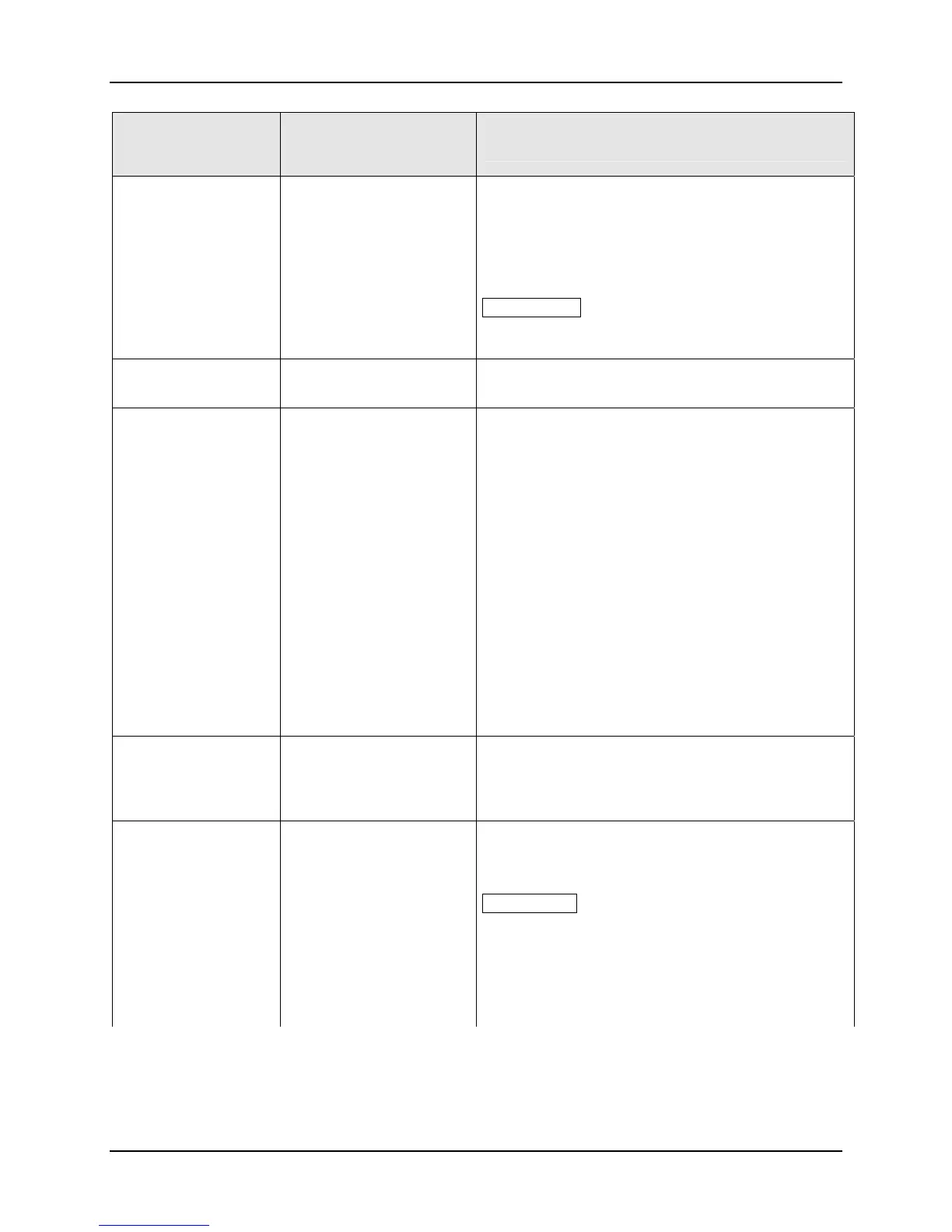